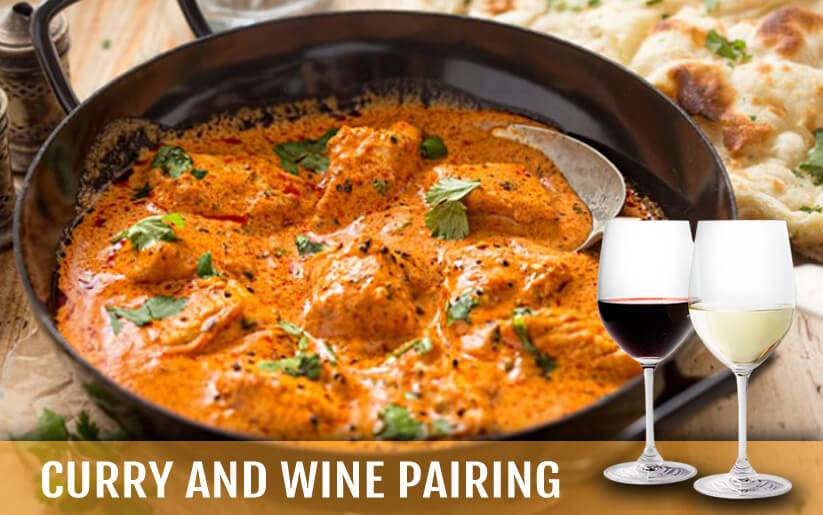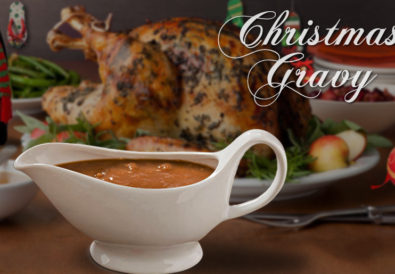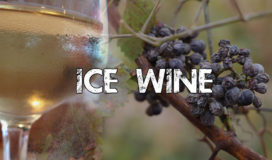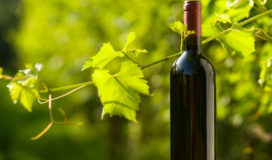Most curry lovers think of Indian food like tandoori chicken skewers and rogan josh lamb as more beer-friendly than wine. With heat from spices like ground chilli & pepper, an array of tricky ingredients like turmeric powder & vinegar, and liberal use of oil, curry is difficult to be paired with wine. A varietal or blend that complements one of the ingredients in a preparation may not go well with another. That said, Indian food wine pairing might be tough, but it’s not impossible. Done right, the wine brings out the best in the curry. We have compiled a list of most popular preparations in Australia, and are sharing expert advice on which wines go the best with them!
Rogan Josh
One of the most known ‘lamb’ curries (Traditionally never cooked with beef or chicken!), this hearty dish of meat, in onion, ripe tomato, fresh ginger, garlic and yogurt gravy (Sauce) is ideally cooked to the point where the lamb fat melts and enriches the preparation. Assorted whole spices, i.e. cumin seeds, cardamoms, cloves, cinnamon sticks, peppercorns (or ground black pepper, for that matter) bring the curry to life by giving it a great depth of flavour. Like a vast majority of Indian and Pakistani curries, it is authentically seasoned with red chilli, though curry houses in Australia usually use paprika, which is milder and has a subtle sweetness to it.
As we get into the ideal rogan josh wine pairing, let us say at the start that dishes with whole spices are not wine-friendly. A homemade rogan josh curry, made with bottled paste, or where the end of cooking discards spices, is the best. (You can use a bouquet garni, i.e. tie all the masalas in a muslin cloth, add it to the pan and remove before serving.) Alternately, if you get a takeaway, try to ensure that you don’t bite into that green cardamom or clove while sipping your drink. A rich red meat dish like this needs a red wine, the rule of thumb that has been discussed on this blog before. A touch of sweetness in the drink will balance the heat from the paprika, and pepper powder is used. We highly recommend a Sparkling Shiraz!
Tandoori Chicken/ Chicken Tikka
A favourite in Australia, this red-coloured (The colour comes from paprika.), slightly charred, tandoor-roasted (Tandoor is the Indian version of oven.) chicken gets its ‘instantly likeable’ flavour from a thick yogurt, lemon juice, ginger paste, garlic paste, garam masala (For the unaware, this is a widely used spice mix, consisting of cumin seeds, coriander seeds, peppercorns, cloves, cassia/ cinnamon, dry ginger, dry bay leaves, caraway seeds and a couple of other ingredients, depending on the brand – all ground together!) and paprika marinade. The fundamental difference between chicken tandoori and tikka is that the former uses bone-in pieces of meat, while the latter is made of boneless cubes. Regardless of the preparation, the chicken is skinless, like in any Indian or Pakistani dish. This is because there is little sense to have the spices sit on the skin when they should be permeating the meat.
When you think of tandoori chicken and wine pairing, remember that its flavour profile is ‘spicy’, but not ‘hot’. The plain yogurt base of the marinade significantly calms down the paprika (or chilli powder, for that matter) heat. Tandoor cooking, or barbecuing (Chicken tikka is grilled on live charcoal, when not cooked in a tandoor.) adds some smokiness to the array of flavours. Match with a glass of wine that goes with chicken, and shows smoky notes. This brings to our mind Pinot Noir, probably aged, from Yarra Valley! (Check the tasting notes of the wine to ascertain whether it offers smoke nuances.) The fruitiness of Pinot Noir complements spice, mainly red chilli powder, as well as the pepper in garam masala.
With this Indian food and wine pairing information, we are sure you won’t have curry with any other drink for a long time to come!
















